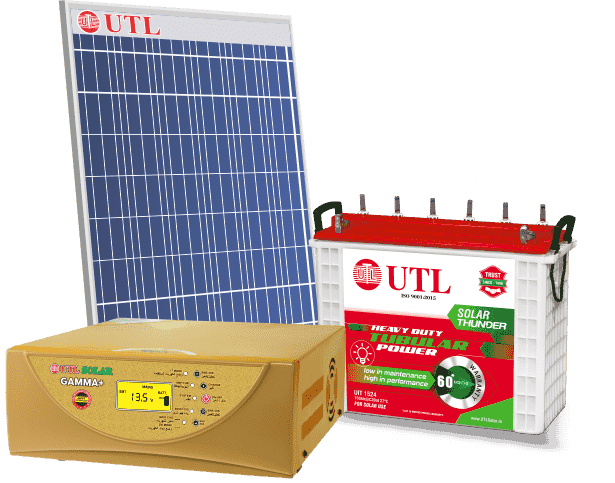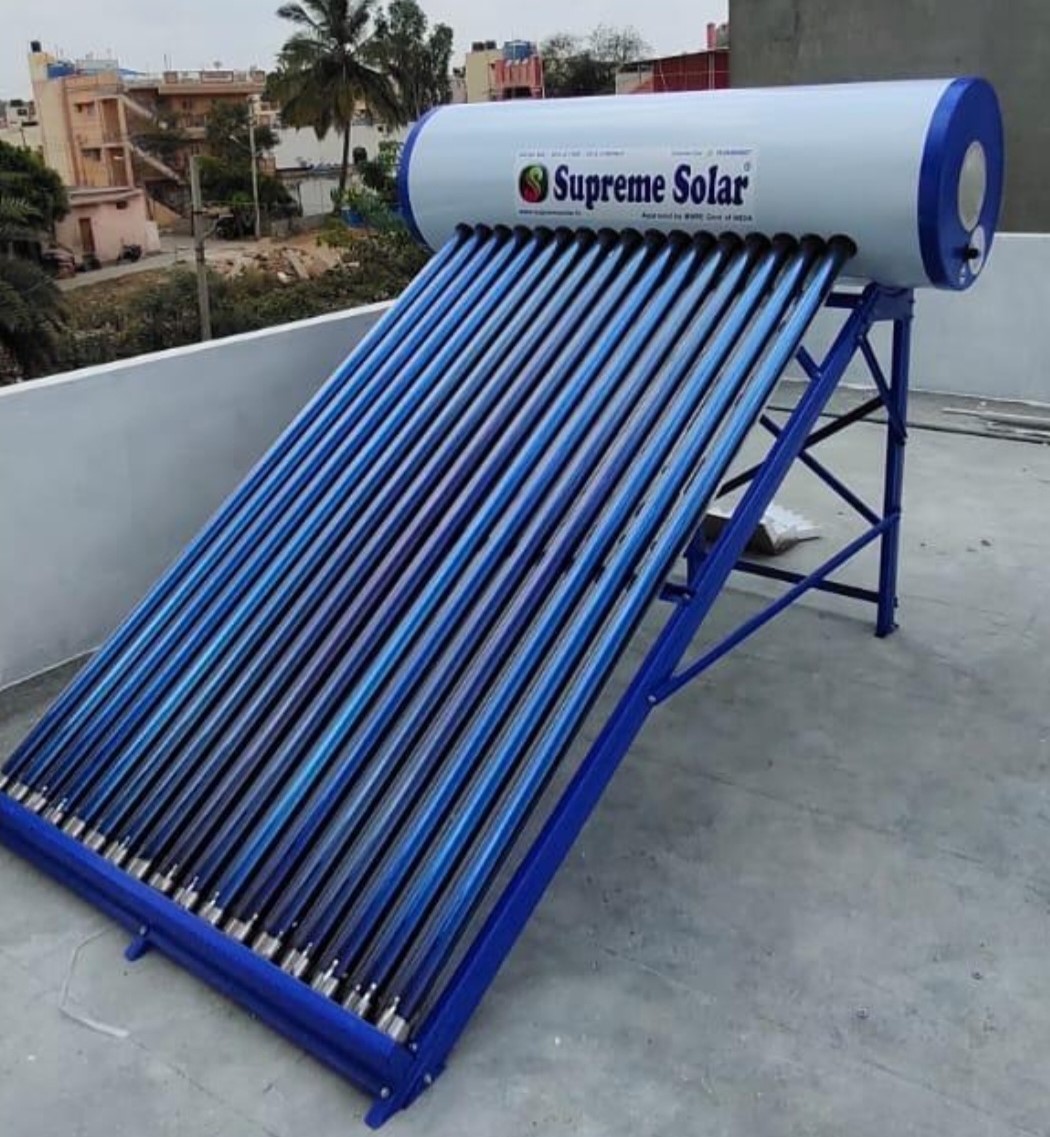

Description:
A solar panel is actually a collection of solar cells (or photovoltaic), which can be used to
generate electricity with the effect of photovoltaic. These cells are arranged in a grid-like
pattern on the surface of the solar panels.
Therefore, it can also be described as a set of photovoltaic modules, housed in a supporting
structure. A photovoltaic (PV) module is an integrated and connected assembly of solar cells.
Solar panels wear very slowly. Annually, their performance decreases only by about 2 percent
(sometimes, or less).
Most solar panels are made using crystal solar cells. But Loom Solar panels are made of
Mono-PERC solar cells which are the latest type of solar cells commercially available in the
market.
Installation of solar panels in homes helps to combat harmful emissions of greenhouse gases and
thus helps to reduce global warming. Solar panels do not lead to any kind of dirt and are clean.
It also reduces our reliance on (limited) energy and traditional energy sources.

Technical Details:
While selecting solar panels, you will see, this technical information on the backside of solar
panels, here is the detailed explanation of each term
Wattage : The maximum power, solar PV module generates in an hour when sunlight touches
the
surface of solar panels.
Open circuit voltage (Voc): It is the maximum voltage available in the positive and
negative
wire of solar panels, it is measured through a dc multimeter device.
Short circuit current (Isc) it is currently available in PV panel when the positive wire is
connected with negative wire.
Maximum power voltage (Vmp): It is the maximum voltage available in solar panels when
sunlight is available
Maximum power current (Imp): It is the maximum current available that can travel through
wires for use.
Maximum system voltage: When solar panels are connected in series or parallel, the
addition
of voltage should not go beyond 1000 volts. The panel is designed to work with 1000 volts.
Safety class: The certification of safety standard
Module size: The size of modules in mm to estimate how much space will be occupied in an
installation at the rooftop.
Solar panels are the lifelong product with 25 years performance warranty. Under warranty,
physical damage is not covered
• 10 years – up to 90% performance warranty that it will generate rated power
• 25 years – up to 80% performance warranty that it will generate rated power
Description:
A Solar Inverter is a device that converts the direct current (DC) from the solar panels into
alternating current (AC) which is used by domestic and commercial appliances. It is one of the
most critical components of the solar power system as it converts power from the sun into more
useful energy and is often referred to as the brain of a solar system. Solar inverters are a
crucial part of a solar system since power from the sun cannot be directly used to run
electrical appliances. Starting out as just boxes converting DC into AC, today, solar inverters
have evolved to become much more smart and intelligent units, performing other functions such as
data monitoring, advanced utility controls, etc.
What is an Inverter?
A much-known function and description of the inverter is to convert the DC current into AC
current by using SMPS module or thyristor-based pulse converter technology. The converted DC to
AC current by inverter will run all the electrical appliances in the house after the power goes
out. Solar Inverters in India are mostly imported through a few domestic and international
manufacturers that have set up manufacturing operations in India. String inverters can be used
for both rooftop and utility solar, while the central inverter is used exclusively for
utility-scale applications. Microinverters are the best option for residential solar but they
are not yet very popular in India.


Technology
Normal Inverter & Solar Inverter

Type
PWM & MPPT

Capacity
1kW, 2.5kW, 3kW, 5kW, 7.5kW & 10kW

Battery Support
12V, 24V, 48V, 96V, 120V

Features
Digital Display, IoT Based

Pricing
Starts Rs. 7,000 to 1,00,000

Brand
Luminous, Microtek, Smarten, & Loom Solar

Service
On Door Service

Reviews
4.4 Starts
Types of Inverter:
Based on the required load and space availability for Solar System, you can choose the Solar
Inverter. There are the following Solar models described here to understand the working function &
that will help you out to choose or invert on the solar inverter.
Basically, three models are there to understand the solar function.
•Grid-Interactive/ Connected System
•Off-Grid System
•Hybrid system
Inverters can be broadly classified into three major types:
i) Off-grid/ Standalone inverters– works independently off the grid and requires battery storage
ii) On-grid/ Grid-tied inverters– are dependent upon the grid
iii) Hybrid inverters – incorporate both battery and grid connection and have an inbuilt solar
charge controller
Grid-tied solar inverters are further categorized into micro, string, and central inverters.
Description:
The growing scarcity of resources isn’t hidden from anyone. Therefore, to tackle with this
issue, several ways were and are still being brought up. One such ways was the use of solar
energy for the generation of electricity. But, it can be done using a few equipment like solar
panel, battery, inverter, charge controller that as a whole are called a solar system. Where
solar panel is the basic requirement in a solar system, a battery acts another. A battery stores
energy, and that’s what makes it this important.
What is Solar Battery?
Solar batteries are C10 rating deep cycle battery designed for connecting with solar charge
controllers, inverters for giving power backup at night. It is designed to be charged from Solar
panels in the day from sunlight. The main component of the battery is the lead inside it. Higher
lead ensures better battery performance and quality. Lead-acid batteries are not sealed and
Maintenance-free hence it requires water top-up once in 3-6 months.

What are various types of solar battery?
There are two types of battery:
a) Flat Plate battery
b) Tubular battery
There is no much difference in these technology type batteries except warranty and life. The
height of the battery determines the technology type, Tubular means tall battery and flat plate
means short height battery.
Battery Backup Time
The backup time of the battery depends upon Battery AH (Ampere hour). Higher the AH, higher will
be backup time. Usually, a 150 Ah battery gives around 3 hours of backup on 400 watt Power
consumption.
In India, 150 Ah is the bestselling rating as it can last up to 3-4 hours if you use Led light,
few ceiling fans, Led Television, mobile and Laptop charging. For higher duration backup, one
can go for the higher Ah battery.
Solar Battery Warranty
Battery warranty has two aspects a) Replacement warranty and b) Pro-rata warranty. If your
battery fails in replacement warranty, Brand will replace it with a new battery and during
pro-rata warranty period, a new battery is offered at a discounted price, which is, also known
as a buyback offer.
ETC Solar Water Heater:
Every household utilizes power for its day-to-day needs; the range of needs might vary but the
regular utility amongst many households is for their morning activities. The morning activities
range over many aspects, the most important one is the bathing activity of the entire family.
Every family member will have a hot water bath to begin their day; this is a natural phenomenon
across India and the globe. Mornings should preferably be pleasant and smooth, with reliable
solar water heaters, mornings invariably become pleasant and relaxing. Supreme with its
state-of-the-art and modern technology builds some of the best and reliable solar water heaters,
these heaters make every sun ray count and relentlessly provide hot running water. Solar Water
Heaters come with ISO certification and they are built using the latest and best available
technologies from the industry.
Supreme Solar Products builds a variety of Solar Water Heaters by adopting different types of
advanced and latest technologies that are industry-relevant. The different types of Solar Water
Heaters are Glass Lined Solar Water Heater, ETC Solar Water Heater, and FPC Solar Water Heater.
The primary and most important technology derivable and objective of the Solar Water Heaters is
to make every sun ray count – convert every sun ray into useful energy.
Supreme Solar Products builds aesthetically adorable solar products, the glass-lines, solar
panels, and tubes are perfectly positioned to give an appealing look on top of the terrace.
Solar Water Heaters are eco-friendly, low on maintenance, easy to install, durable for a
lifetime, and are extremely energy-efficient, the solar water heaters save over 70% of the
electricity bills. As renewable energy is the only sustainable option left for the future, solar
water heaters and its associated technologies are the only option available to secure the
future.

Description:
Solar Street lights are being widely used to light up street, lawns, parks, etc. These solar
street lights consume no power from the grid and work solely on the solar power. They also
eliminate the need for underground cabling and multiple switching points
Working Principle:
The solar energy is absorbed in the daytime and is stored in the battery to power the light in
the night. The light is set to be switched on once the input voltage from the solar energy falls
below a threshold limit. The light is set to be switched off automatically, once the input
voltage from the solar energy raises above a threshold limit. This makes the light to glow once
it becomes dark and light to switch off in the dawn.
Types:
Solar Street Lights are of two types.
1. Traditional Solar Street Lights
2. All in One Solar Street Lights
The components of the solar street light are distinct and are placed at different positions.

In all in one solar street lights, all the components of the solar street light is inbuilt in a single body.
